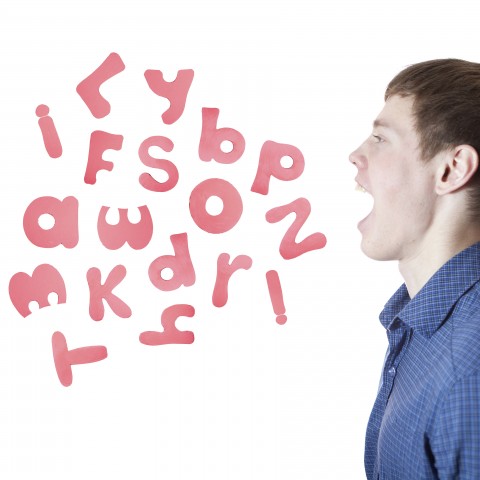
As you embark on your journey to learn Japanese, you might wonder: does the Japanese language have tones? In this article, we will discuss the answer to this question. We’ll also discuss pitch accent in Japanese and why it’s important for effective communication.
Table of Contents- Does Japanese Have Tones?
- The Role of Pitch Accent in Japanese Language
- Examples
- Why is Understanding Pitch Accent Vital?
- Conclusion
1. Does Japanese Have Tones?
Tonal languages are common the world over, and Asia is no exception. In addition, many words in Japanese use kanji that originally came from Chinese, which is a tonal language itself. Taking that into consideration, “Are there tones in Japanese?” is a sensible question to ask. However, spoken Japanese isn’t actually related to Chinese beyond loanwords, or any of its other neighbors.
So, in the end, the answer is no, Japanese does not have tones. However, Japanese does have pitch accents, which can sound similar to the tones of Mandarin Chinese and other tonal languages.
While Japanese pitches might sound like they could be called Japanese tones, they’re considered two different things. Pitch accent is a fascinating aspect of the Japanese language that sets it apart from English stress accents and Chinese tones.
So what does it mean to have pitch in Japanese? Pitch accent refers to the musical rise and fall of a syllable’s pitch within a word. It plays a pivotal role in distinguishing the meanings of words that might otherwise sound identical. Unlike English stress accents and Chinese tones, pitch accent in Japanese involves only two levels: high and low. This is the reason why they’re not considered part of either category.
2. The Role of Pitch Accent in Japanese Language
Pitch accent varies across regions in Japan, but “standard Japanese” based on the Tokyo dialect serves as a reference point. Each syllable in a word is assigned a specific pitch pattern, which determines whether it starts high and falls low or starts low and rises high.
For instance, consider the words 雨 (あめ、ame), meaning “rain,” and 飴 (あめ、ame), meaning “candy.” The former starts with a high pitch and drops to a low pitch, while the latter begins with a low pitch and rises to a high pitch. This distinction prevents confusion between words that share the same sounds.
Another example involves the words 箸 (はし、hashi) for “chopsticks” and 橋 (はし、hashi) for “bridge.” The pitch patterns again differentiate these words effectively.

3. Examples
A. High-Low Pattern:
- 神 (かみ、kami) – “God” (high pitch on the first syllable, low pitch on the second)
- きのこ (kinoko) – “mushroom” (high pitch on the first syllable, low pitch on the second and third)
- 猫 (ねこ、neko) – “cat” (high pitch on the first syllable, low pitch on the second)
B. Low-High Pattern:
- さくらんぼ (sakuranbo) – “cherry” (low pitch on the first syllable, high pitch on the rest)
- 鳥 (とり、tori) – “bird” (low pitch on the first syllable, high pitch on the second)
- 人 (ひと、hito) – “person” (low pitch on the first syllable, high pitch on the second)
- 竹 (たけ、take) – “bamboo” (low pitch on the first syllable, high pitch on the second)
- 橋 (はし、hashi) – “bridge” (low pitch on the first syllable, high pitch on the second)
C. Low-High-High Pattern:
- すみれ (sumire) – “violet” (low pitch on the first syllable, high pitch on the second and third)
- ねずみ (nezumi) – “mouse” (low pitch on the first syllable, high pitch on the second and third)
D. Low-High-Low Pattern:
- 卵 (たまご、tamago) – “egg” (low pitch on the first syllable, high pitch on the second, low pitch on the third)
- 日本 (にほん、Nihon) – “Japan” (low pitch on the first syllable, high pitch on the second, low pitch on the third)
- 高い (たかい、takai) – “high” (low pitch on the first syllable, high pitch on the second, low pitch on the third)
E. Low-High-High-Low Pattern:
- 足あと (あしあと、ashiato) – “footprint” (low pitch on the first syllable, high pitch on the second and third, and low pitch on the fourth)
- 雷 (かみなり、kaminari) – “thunder” (low pitch on the first syllable, high pitch on the second and third, and low pitch on the fourth)
- 味噌汁 (みそしる、misoshiru) – “miso soup” (low pitch on the first syllable, high pitch on the second and third, and low pitch on the fourth)
4. Why is Understanding Pitch Accent Vital?
Understanding pitch accent is crucial because Japanese has a limited number of distinct syllabic sounds. This results in many homonyms—words that are written as using the same sounds but which have different meanings. Pitch accent is essential for distinguishing between these homonyms, avoiding misunderstandings, and conveying precise meanings. Otherwise, you might talk about candy while discussing the weather or ask where the rain aisle is at the store!
Tips and Strategies
Mastering pitch accent requires practice and attentive listening. Here are some strategies to enhance your pitch accent skills:
- Listen Actively: Pay close attention to native speakers’ intonation and pitch patterns while listening to Japanese conversations, songs, or media.
- Practice Pronunciation: Practice repeating words with correct pitch accent patterns. Record yourself and compare your pronunciation to how natives speak Japanese.
- Use Resources for Learning Japanese: Utilize Japanese learning materials, such as audio courses and online platforms like JapanesePod101, that focus on pitch accent.
- Engage in Conversations: Regularly engage in conversations with native speakers or fellow Japanese learners to refine your pitch accent skills in a practical context.

5. Conclusion
In your quest to master Japanese, understanding the Japanese pitch accent is a vital step toward clear and effective communication. Embrace the melodies of the language, as pitch accent not only sets Japanese apart but also enriches your learning journey. By recognizing and practicing pitch patterns, you’ll enhance your ability to differentiate between homophones, identify word boundaries, and express yourself accurately in this beautiful language.
Continue your exploration of the Japanese language’s intricacies by delving into other captivating topics like verb conjugations or kanji characters. Stay curious and dedicated on your language learning journey, and remember that each aspect you master brings you closer to fluency.
Boost Your Japanese: Engage with Pitch Accent Now!
Ready to elevate your Japanese language skills? Whether you’re aiming for fluency or simply seeking to improve your conversational skills, the knowledge of pitch accent is a valuable tool in your language toolkit. So, dive deeper into pitch accent with our comprehensive audio lessons and interactive exercises!








